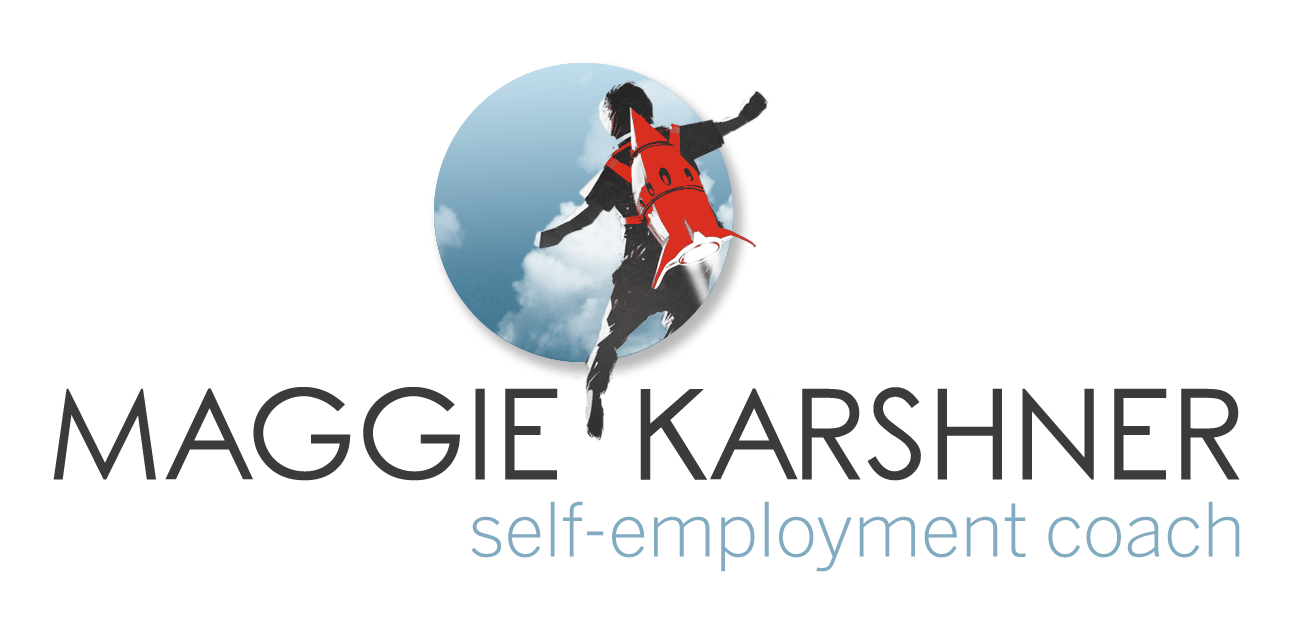Avoid Price Increase Agony: How to Easily Raise Your Rates
/There comes a time in most business's life when they have to raise prices. Over time inflation and changes to the cost of living tend to increase. If you've been in business long enough, these changes reduce the buying power of your revenue. This in turn will drive the need to raise your rates. So congratulations on being in business so long! Alternatively, maybe you underestimated your value when you started your business. Now the writing's on the wall that you need to raise your rates. Regardless of your story, I'm going to give you the solution. I'm going to talk about the three big questions you have when it comes to raising your rates: How do you know it's time? How much to increase? and How to tell people?
How Do You Know It's Time?
The easiest way to know if it's time to raise your rates is to ask that question on a regular cadence. Once a year is about the most frequent which makes sense. It can be easily grouped with other annual financial habits like paying taxes. But it doesn't have to be annually. For my business, I've fallen into an every-five-year cadence.
When this time marker comes by, assess. Look at the amount of time/energy you're devoting to work. Compare this to your income expectations and personal financial goals. If you're working your butt off and not bringing in the bacon, it's definitely time to raise your rates! Having more clients than you can work with is another good indicator you could raise your rates. At the bare minimum do a calculation for changes in inflation or cost of living increase. This ensures you're not accidentally giving yourself a pay cut as you keep your rate the same!
How Much to Increase?
The above is a screen shot from the SSA COLA tables for the years 2015 through 2023.
We're going to start with that increase in cost of living. The government provides multiple stats to understand inflation. I find it easiest to tie this to the Social Security Administration's (SSA) Cost-Of-Living Adjustment (COLA) calculation. This is probably the most conservative number. If your city or region has outpaced the nation in some regard, there might be better numbers. For example, in the Consumer Price Index (CPI) for your area. Or just think of COLA as the starting point
In the COLA table, find the year of your last price increase. Add the COLA value for that year to each year through to the most recent year provided. I'll use myself as an example: I last raised my prices in 2019. The COLA for 2019 was 1.6. I'm writing this in 2024, so the values for the years since 2019 are 1.3, 5.9, 8.7, and 3.2. Combine these values and you get a COLA of 20.7%.
Once you have your COLA for the given time period, increase your current rate by that percentage. My standard rate is $150. I can multiply that by .207 and add that back into $150 or simply multiply it by 1.207. This results in a new price of $181.05.
Other Factors
The COLA calculation is only one data point about what a fair market rate might be. When you first set your price, you likely took into account what the market would bear. You probably talked to friends or colleagues to settle on an appropriate price. Time has passed and people's expectations have too. Also, during this time you've gained experience which ought to be more valuable.
Take a moment to do some super basic market research. Ask a couple of colleagues about their rates. Or do what I did and check their websites for their rates. Or ask Google "How much does [your industry] cost in [current year]." The search results will be full of companies trying to provide services to people like you. Take their free perspectives, and leave their services. The answers you get from friends or Google will vary widely. They are data points that you get to make sense of.
But Think of the Children... er... Clients!
When I did my market research I found a Bark article that put coaching at $90 per session. Big scoff! I also found a Paperbell article with a free download that shared anonymized rates from other coaches. There was no guarantee of the veracity of that report, and it was far from a significant sample size. Plus, there’s no evidence that the disclosed rates resulted in a successful business. But that report put the price at $200-$500. But now I've got some data points: $90, $200-$500, and (from my COLA calculation) $181.05. Now how do I convert this into a new price?
I notice at this juncture business owners often get concerned if their clients can afford it. So here's a reminder: If they cannot afford you, by definition they are not your ideal client. For your current clients, we can soften the transition and I'll get into that in the next section.
More important than what your clients think of the number, is if you can work with it easily! $181.05 is a stupid number that I'll never remember. Even worse, my group rate and sliding scale are half my regular rate. Half that, $90.525, is an even more impossible number. Clients also often want to know the total rate for a month or the initial 3-month commitment. I cannot multiply $181.05 in my head. There's no way I'm using that number.
Maybe you're better at math or never need to verbally quote a price. Regardless, pick a number that works for YOU. Round numbers are often popular, or it could be a number you've always been fond of. Remember how you have to communicate your price and make sure the price you're choosing will work for you. It might not feel as comfortable as your old price, but growth is uncomfortable. So lean into that.
How to tell people?
You've decided to raise your rates and you know how much. Now comes the hard part: you have to tell people the new rates. This isn't technically challenging, but it does seem to bring up a lot of feelings. Some folks might worry that their clients might flee due to the price increase. Others might be concerned that their current clients could experience resentment. Some worry that new clients will feel they're charging an indefensiblely large amount. Others worry the new price doesn't reflect how much they enjoy working with their clients.
Whatever you're feeling, start by grounding yourself. You've thought this through. You know that in order to respect yourself, you need to increase your rate. Your clients do not get the best you unless you're taking care of yourself. It's rare to get paid more than you're asking, so it's important to ask for a sufficient amount. You are ok. You will continue to be ok. This is a good change!
You are going to make this change in a way that honors everyone involved. That means it honors you AND the relationships you have with your clients. To do this you're going to clearly communicate this change. You'll give people time to understand and shift their financial expectations accordingly. What that looks like could be many different things. You could provide advanced notice of a week, a month, 3 months, or longer. Perhaps you start by taking on new clients at the higher rate and bump up existing clients later. Or you could offer existing clients to stay at their legacy rate for a time or for forever.
You're going to be clear that this change has nothing to do with the work you're doing with that one client. That you enjoy working with them and want to see that continue. You're going to set an expectation of how soon the next rate evaluation will come. e.g. "I make this change only once per year" or "these prices will remain for a minimum of 2 years."
Not sure how to do all those things in one email? I've made a template you can download for free to get you off the ground!
Now What?
See, raising your rates isn't actually that hard! You've read this whole article and answered the three big questions. You know if you need to raise them, how much to raise them, and how to do so. Now all you need to do is take action! Here's your 4 step super easy action plan:
how much - your "final answer" on your new price
when - pick a date the new rates take effect
template - edit the email template to suit your business
GO! - email current clients and update your systems with the new rate
At the start of this article, you weren't sure if you needed to raise your rates. And if you did, you weren't confident with how to make this decision. Now you understand all the factors and have a clear path towards increased rates. (Or clarity that you don't need to raise them!) Take action now and bookmark this article for all your future rate increase needs!





